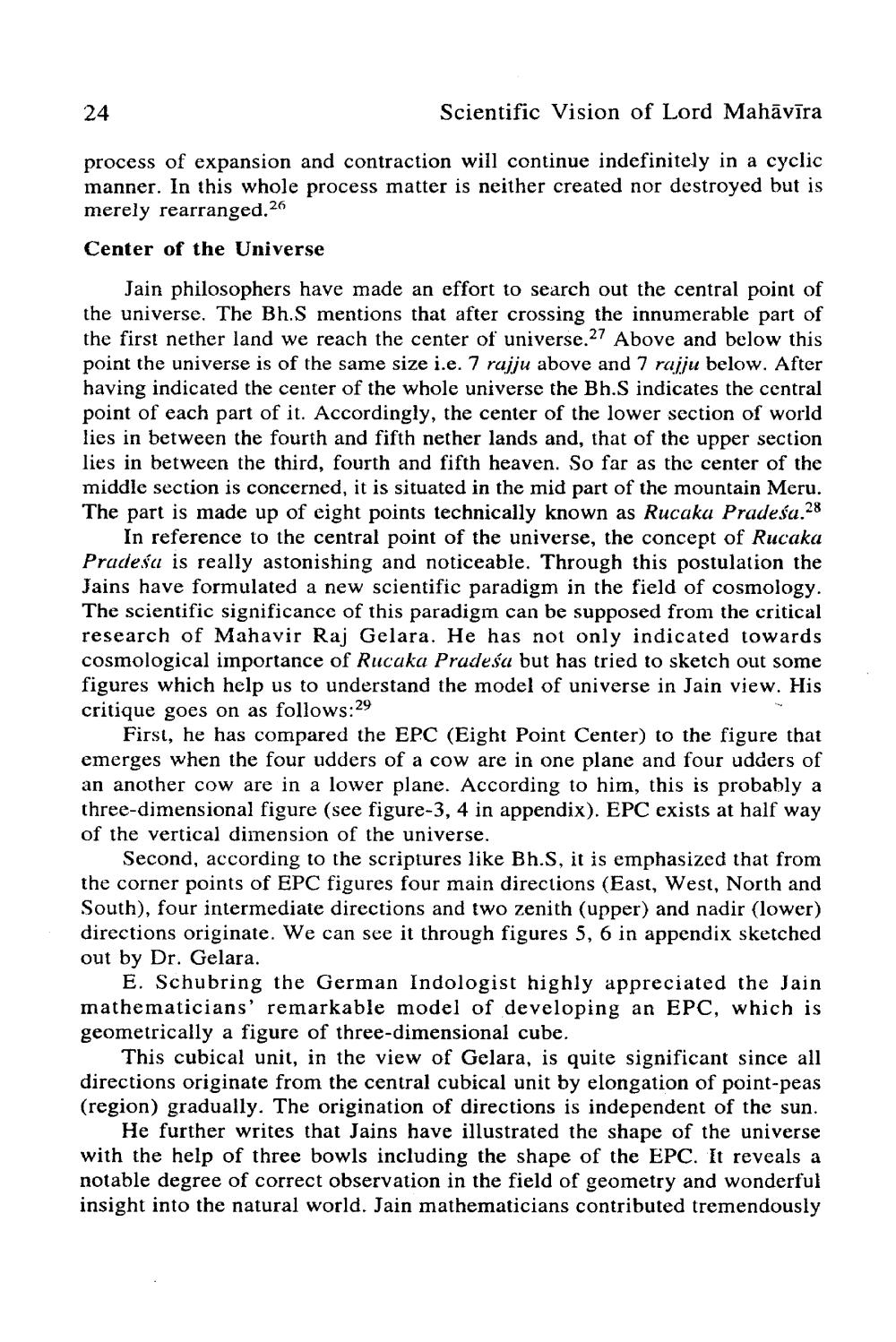________________
24
Scientific Vision of Lord Mahāvīra
process of expansion and contraction will continue indefinitely in a cyclic manner. In this whole process matter is neither created nor destroyed but is merely rearranged. 26
Center of the Universe
Jain philosophers have made an effort to search out the central point of the universe. The Bh.S mentions that after crossing the innumerable part of the first nether land we reach the center of universe.27 Above and below this point the universe is of the same size i.e. 7 rujju above and 7 rajju below. After having indicated the center of the whole universe the Bh.S indicates the central point of each part of it. Accordingly, the center of the lower section of world lies in between the fourth and fifth nether lands and, that of the upper section lies in between the third, fourth and fifth heaven. So far as the center of the middle section is concerned, it is situated in the mid part of the mountain Meru. The part is made up of eight points technically known as Rucaku Pradeśa.28
In reference to the central point of the universe, the concept of Rucaka Pradeśa is really astonishing and noticeable. Through this postulation the Jains have formulated a new scientific paradigm in the field of cosmology. The scientific significance of this paradigm can be supposed from the critical research of Mahavir Raj Gelara. He has not only indicated towards cosmological importance of Rucaka Prudesa but has tried to sketch out some figures which help us to understand the model of universe in Jain view. His critique goes on as follows:29
First, he has compared the EPC (Eight Point Center) to the figure that emerges when the four udders of a cow are in one plane and four udders of an another cow are in a lower plane. According to him, this is probably a three-dimensional figure (see figure-3, 4 in appendix). EPC exists at half way of the vertical dimension of the universe.
Second, according to the scriptures like Bh.S, it is emphasized that from the corner points of EPC figures four main directions (East, West, North and South), four intermediate directions and two zenith (upper) and nadir (lower) directions originate. We can see it through figures 5, 6 in appendix sketched out by Dr. Gelara.
E. Schubring the German Indologist highly appreciated the Jain mathematicians' remarkable model of developing an EPC, which is geometrically a figure of three-dimensional cube.
This cubical unit, in the view of Gelara, is quite significant since all directions originate from the central cubical unit by elongation of point-peas (region) gradually. The origination of directions is independent of the sun.
He further writes that Jains have illustrated the shape of the universe with the help of three bowls including the shape of the EPC. It reveals a notable degree of correct observation in the field of geometry and wonderful insight into the natural world. Jain mathematicians contributed tremendously




